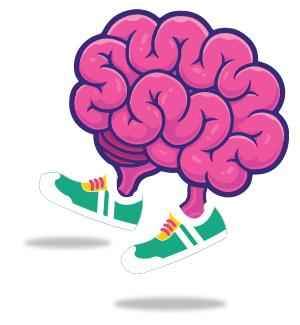How to know when you're running in the right zone

Knowing when you’re going hard and when you’re taking it easy is key.
Knowing when you’re going hard and when you’re taking it easy is key to effective 80 / 20 Dr Stephen Seiler of the University of Agder, Norway, is one of the world’s foremost exercise physiologists and recommends a ‘triangulation of methods’, using a combination of heart rate, perceived exertion and pacing for best results.
Heart rate
Heart-rate monitors are very accurate at measuring intensity. First, identify your lactate threshold, which is similar to the ventilatory threshold. You can find yours by undertaking a 30-minute time-trial run where, after a brief warm-up, you run as far as you can in 30 minutes. Take your average heart rate during the last 10 minutes as your lactate-threshold HR.

Below are five intensity zones based on lactate-threshold HR. You’ll note that these aren’t contiguous.
That’s due to a buffer between low and moderate and moderate and high. Avoid these ideally, as that’s the physiological no-man’s land. Ventilatory threshold falls at the bottom end of zone 3, so anything under that is low intensity; high intensity is zones 4 and 5.
- Low aerobic: 75-80% of lactate threshold
- Moderate aerobic: 81-89% of lactate threshold
- Threshold: 96-100% of lactate threshold
- VO2 Max: 102-105% of lactate threshold
- Speed: 106%-plus of lactate threshold

Pros Good for maintaining effort level during low-intensity runs.
Cons Not great for high intensity because of a phenomenon known as cardiac lag. Your heart can take up to 30 seconds to catch up to an increase in effort. The same when recovering.

Perceived exertion
Simply, this refers to how hard you feel you’re working during a session. To help you quantify this, many coaches will use a simple one-to-10 system, where one is extremely easy and 10 extremely hard.
Low-intensity corresponds
to a rating of 1 to 4; moderate, 5-6; and high, 7 to 10.
Pros The simplest and, arguably, the most realistic indicator of the body’s current limits and state.
Cons As intensity rises, your brain can overestimate exertion levels.

Pacing
Use the online pacing calculator at runnersworld.com/uk/pacecalculator. Input a time from a recent race or time trial and it calculates your target paces for different types of session.
This includes ‘easy’, ‘long, ‘tempo’, ‘VO2 max’ and ‘speed’.
For the purposes of 80/20 training, easy and long are low; and VO2 max and speed are high.
For example, 40 mins for a 10K means easy is 4:57min/km and long 4:57-5:36min/km, while VO2 max is 3:43min/km and speed 3:26min/km.

Pros Great for monitoring and controlling intensity in moderate and high-intensity runs.
Cons Don’t fall into the pacing trap of going too hard every session.
Cr: https://www.runnersworld.com
|



